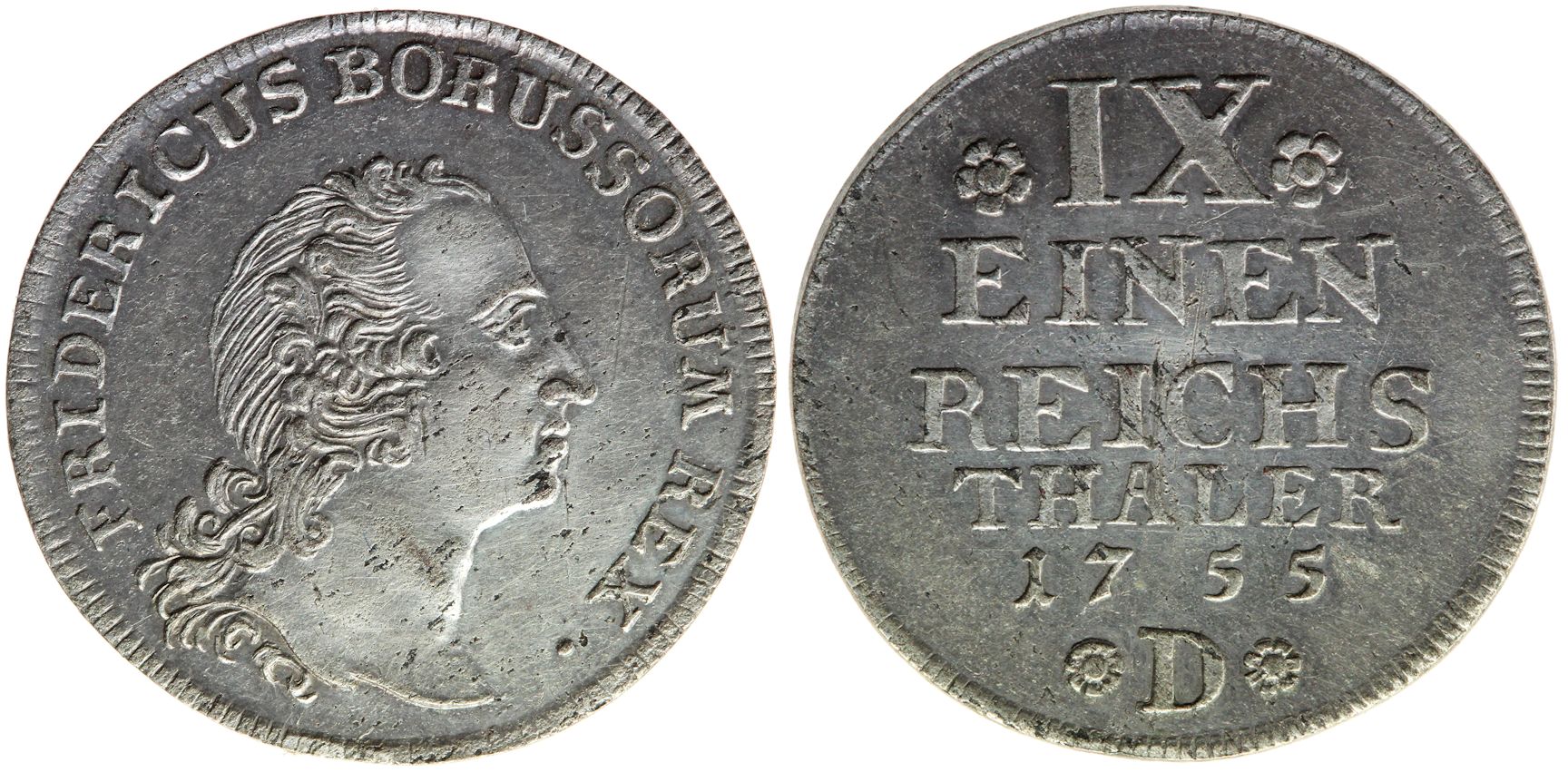
Prussia, Kingdom 1/9 Thaler, 1755
Frederick II of Prussia – also known as “Frederick the Great” – came from the House of Hohenzollern. He was born the son of the Prussian “Soldier King” Frederick William I on 24 January 1712. During his reign, the still young Kingdom of Prussia rose to become a great power
No other monarch in Europe left such a lasting influence on the coins and monetary system of his country as Frederick the Great. Through his coin reforms of 1750 and 1764, not only did he set Prussia on a new course, he also played a key role in paving the way for later developments in the rest of Germany. Johann Philipp Graumann, the mint director commissioned with implementing the reforms, converted the seven Prussian mints (Berlin, Breslau, Cleves, Aurich, Königsberg, Magdeburg and Stettin) into state-owned enterprises. New coin denominations were created and the coin systems of the individual regions were harmonised. 1/6 and 1/12 thaler were amongst the coins minted for the whole Kingdom of Prussia. The 4 Mariengroschen coins minted in East Frisia did not fit into this system. According to the conversion rate, these coins were equivalent to 1/9 of the Prussian thaler and were thus exactly halfway between the two denominations of the minted currency (ie money in full circulation which takes its value from the precious metal it contains). There may have been plans to issue a matching 1/9 thaler coin for the western parts of the Kingdom which used the Mariengroschen so that a coin which was valid for the whole of Prussia would also be available for these western regions in the future.
The 1/9 taler from the Aurich mint depicted here is one of three known specimens and the only Prussian coin with the denomination 1/9 taler. It is also the only coin from the East Frisian province designated to bear the portrait of Frederick the Great.
[Objekt-ID: 68266].